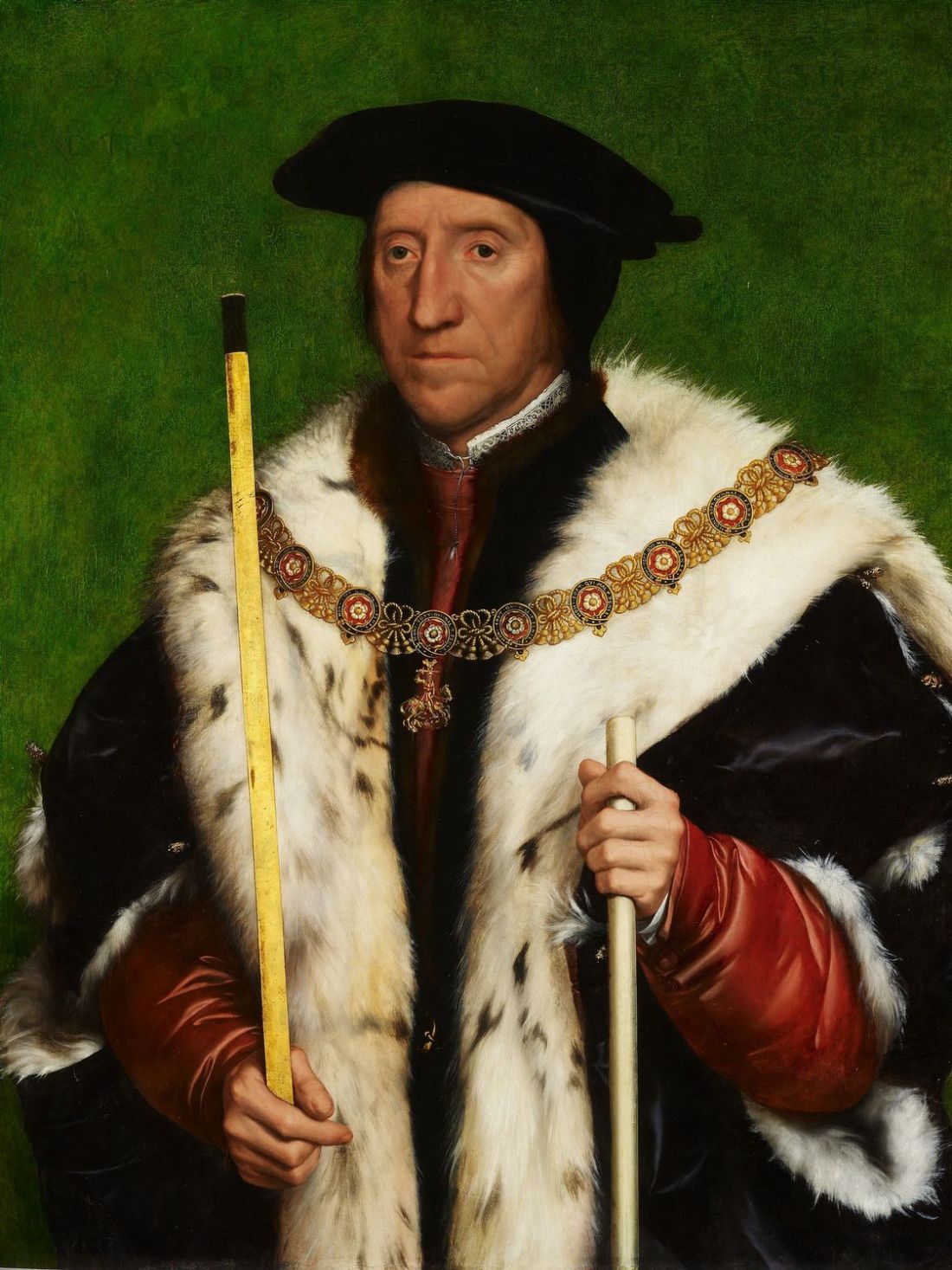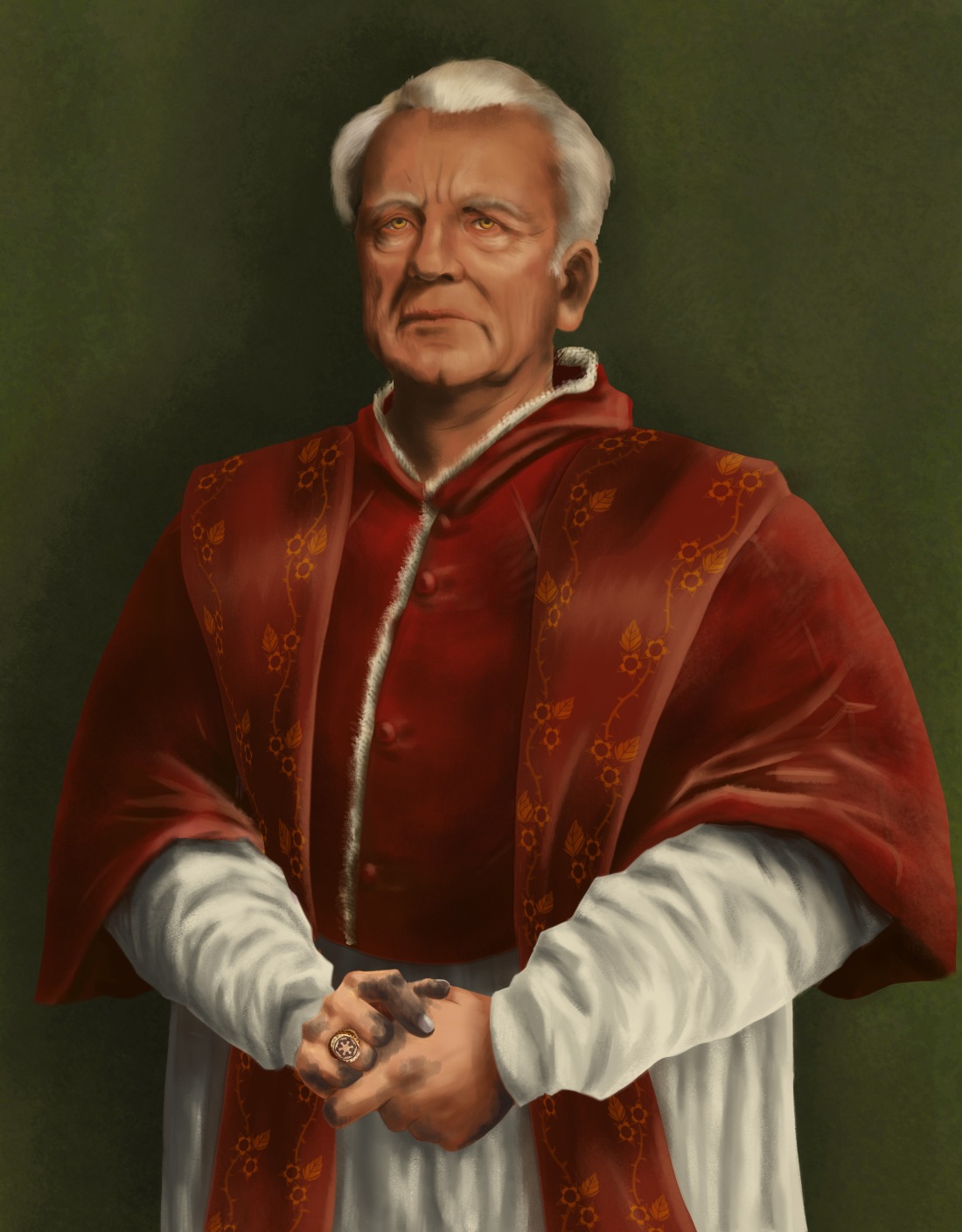When the Early Renaissance came to be, artists focused less on idealization of forms and instead began to focus on painting with as much realistic detail as possible. This ideology of drawing the minute details as accurately as possible became known as Naturalism, the technique of drawing forms and environments according to how they are seen in nature. Trees looked like trees, rocks looked like rocks and improvements in perspective and proportion meant you even saw someone’s back once in a while. It was all very exciting. Huge strides in artistic technique, with ability and skill being highly prized, lead to the increasing belief that possessing such artistry was a sign of status. This caused a massive increase in commissions of works and portraits from individuals rather than just from the traditional religious organizations. The artistic business boomed with massive artist guilds popping up all over the Western world and new masters gaining notoriety.

Hans Holbein the Younger, “Thomas Howard, Third Duke of Norfolk”, c.1473 -1554, Oil Tempera on panel, 80.1 x 61.4 cm, Windsor Castle, England.
This Portrait by Hans Holbein the Younger features Thomas Howard, 3rd Duke of Norfolk, created with oil tempera on wood. For a portrait of a single individual, Holbein does an excellent job of dividing the space effectively to create balance and movement.
The triangular shape of the Duke is a dark solid starting focal point that draws the eye from the base of the figure, The lines of the fur mantle funnel the eye up to the central focal point which is the face of the Duke. The eye then continues up to the background at the top of the image, and diverges to lead back down the sides of the painting to the base of the triangle.
The colors of this painting are highly saturated with the only exception being the slight tomato tone of the silk sleeves but that is more likely to be due to the colors used in the highlights. The intensely saturated expanse of green background serves to balance out the heavy dark tones of the figure. The richness of the colors all point to signs of wealth and nobility. Brightly painted rooms in intense tones used to be seen as a sign of wealth and elegance due to the fact that the pigment was expensive.

The textures of this painting are extremely decadent. The highlights on the different materials and how they are applied is the prime method in which textures are established. The shape of the silk shirt is sharp and defined while the highly contrasted yet fuzzy highlights on the cloak give the distinct soft impression of velvet. The fur is extremely feathered and rough, with individual hairs being easily distinguished while a more slight tonal general highlight is used over the majority of the surface. The skin tones are extremely smooth, with saturated shadows mixed with subtle areas of lighter tone without highlights reaching extremes at any point. The edges of the figure are sharp and well defined, with the only soft blurred edges being used for fur and hair.

Brittany Katz, “Pope Palpatine the Sidious”, 2018, Photoshop
For my portrait I was assigned the nefarious Emperor Palpatine also known as the Sith Lord, Darth Sidious. Since Sith Lords were in short supply during the Renaissance, I decided to find an equivalent historical figure in which to base his depiction off of. I decided that Rodrigo Borgia also known as Pope Alexander VI would be the perfect figure him to emulate. Rodrigo Borgia was a powerful religious figure who ruled over a vast culture and came to power through manipulation, subterfuge, and even murder. He is one of the most Infamous religious figures in history. Borgia’s main henchman also happened to be his son, the greatly feared Cesare Borgia whom he was grooming to one day take over in his place.(1) The draws a nice connection to Emperor Palpatine and his highly feared Apprentice, Darth Vader.



Holbein Portrait My Pope Palpatine Portrait Emperor Palpatine (Actor, Ian McDiarmid)
In the style of Hans Holbein the younger, I depicted Emperor Palpatine in typical papal garb, appearing as he did before his disfigurement into an evil-looking wrinkled mess. This first visual decision was made for two reasons. The first is that I wanted Palpatine to look normal in order to best illustrate the underhanded sinister nature he was so well known for. The second is that Rodrigo Borgia was described as a good looking man and since he is the base for the translation I decided to keep in line with that theme.(2) While Palpatine may look normal I added several symbolic meanings to imply the darkness of his nature.
Pope-Face Palpatine Sith-Face Palpatine
The first is that I decided to give Palpatine the evil Sith eyes that he gained after his disfigurement. This is a play-off of the saying, “the eyes are the windows to the soul”, whereas even though Palpatine looks nice and approachable, you can see the evil within. Emperor Palpatine’s sash also features an ominous symbol, a pattern of Atropa Belladona, also known as Deadly Nightshade. It was a common symbol for evil, death, and poison.
Typical Papal Ring Emperor Palpatine’s Ring Galactic Empire Symbol
Moving down further to perhaps the most poignant area of the portrait is Emperor Palpatine’s hands. On his right hand rests his papal ring but instead of depicting a patron saint, of which a typical pope chooses as their figure to emulate and guide them, Palpatine’s ring depicts the symbol of the evil Galactic Empire. This is a symbol as well as a message that Palpatine worships no other but himself and his Empire.


Emperor Palpatine’s Hands Physical symptom of prolonged Arsenic exposure
Since the force didn’t exist in the renaissance, Palpatine would have most likely used poison as his weapon of choice for eliminating enemies. Looking closely at the hands Emperor Palpatine, you can see that there is discoloration in the nails and fingertips the nails have turned a blackish blue in the hands themselves have discolored with patches of Black soot like blemishes. This is a visual sign of extended exposure to handling Arsenic, a toxic substance that is extremely deadly and was often used in poisons.(3) Arsenic is also the base for the legendary Cantarella poison of which Rodrigo Borgia and his family were famous for. The poison was a tasteless powder that would be sprinkled into the food or drink of the unfortunate victim. Its potency could be altered so that the time it took to kill the victim could be as short as a few minutes or as long as a few days.(4) As a parallel, Emperor Palpatine’s method of choice was to meet out death through the use of force lightning. Those who opposed these men had a nasty habit of turning up dead and the replacements all tended to be loyal supporters. They literally had the power of death at their fingertips without the need of a physical weapon. It is perfect also because the discoloration from Arsenic exposure looks a lot like electrical burns.

Titian, “Portrait of Alessandro Farnese, Pope Paul III”, 1545- 1546, Oil on Canvas, The Hermitage Museum, Italy.
Palpatine’s Garb is that of a typical Papal figure which created a unique issue in designing this piece. Papal figures are typically featured in Italian Renaissance style of art consisting of tons of old religious men in deep red robes in front of a dark void-like background. However, the style I’m trying to emulate is that of Holbein’s Northern Renaissance, which rarely depicted the Papacy. To correct this issue, I decided to make the background a simple color that is more typical of Hans Holbein the Younger rather than Italian artists. However, considering the evil nature of the subject, I toned down the jewel tones that Holbein tended to use in favor of a more subtle forest green tone. That way the style is still in line with Holbein’s style but won’t fight with the red of the Papal robes and will also reflect the dark nature of the subject. Emperor Palpatine is a Master of the Dark Side after all.
- Herbermann, Charles George, Edward A. Pace, Condé Bénoist Pallen, Thomas J. Shahan, and John J. Wynne. The Catholic Encyclopedia: An International Work of Reference on the Constitution, Doctrine, Discipline, and History of the Catholic Church. Vol. 1. pg 289-293. New York: Encyclopedia Press, 1913.
- Ibid.
- Karamanou, Marianna, George Androutsos, A. Wallace Hayes, and Aristides Tsatsakis. “Toxicology in the Borgias Period: The Mystery of Cantarella Poison.” Toxicology Research and Application2 (2018): 239784731877112. doi:10.1177/2397847318771126.
- Ibid.






